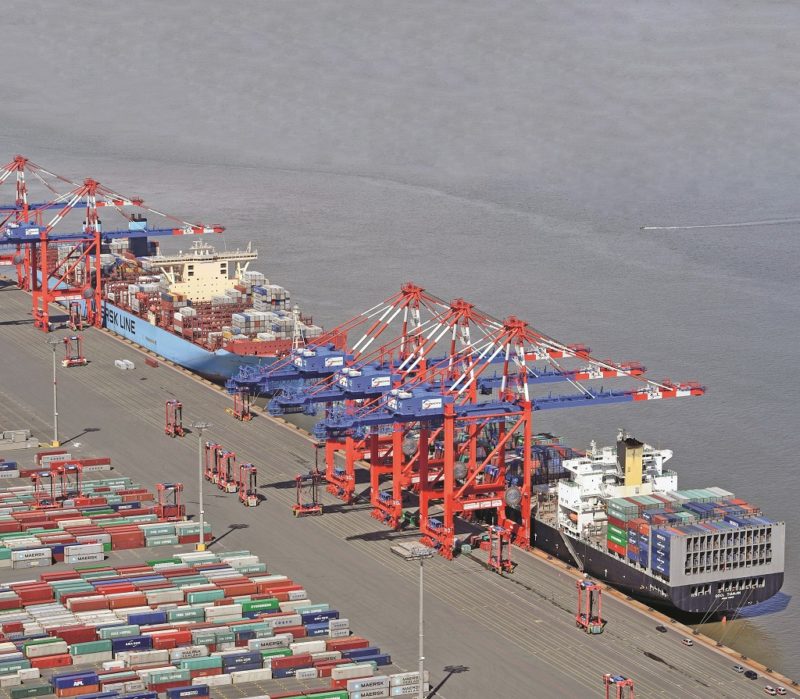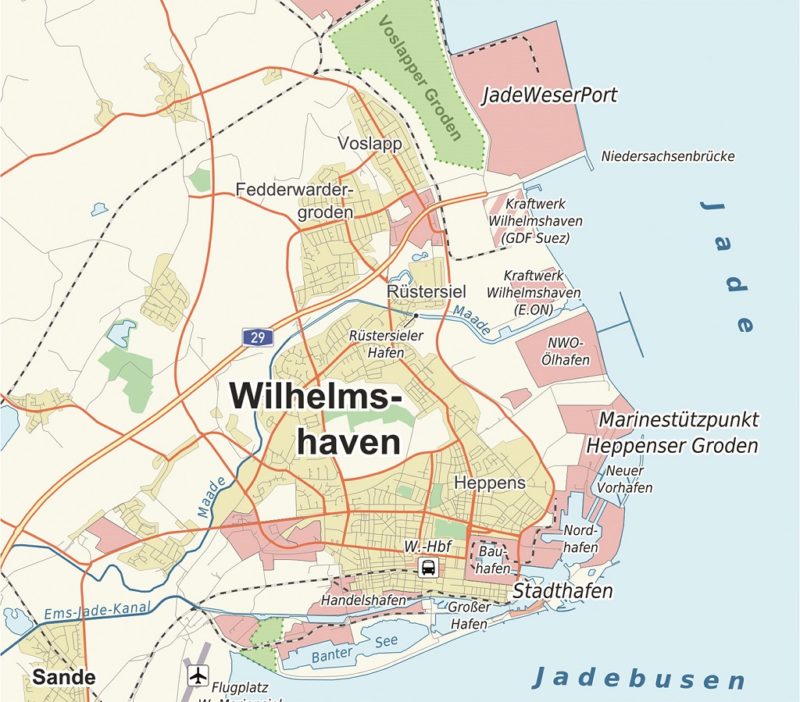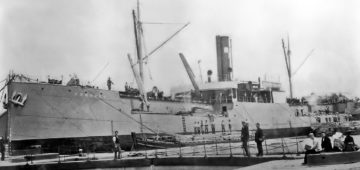
Today the German Navy, like its predecessors, calls Wilhelmshaven home. The massive naval base is home to a large proportion of the entire German fleet. What many may not realise, however, is that the majority of the facilities were built at the behest of Chancellor Adolf Hitler and utilised by the Nazi regime.
During World War Two Wilhelmshaven became one of the most heavily bombed ports in German held territory but throughout the conflict shipbuilding at the shipyards around the town continued producing such ships as the battleship Tirpitz, which Winston Churchill famously nicknamed ‘The Beast’.
Located 24 miles up the Jade River the development of Wilhelmshaven as a port was first visualised in the 1850s when Hafenbaudirektor (Chief of Port Construction) Wilhelm Goker announced plans for its construction. He had been following the instructions of the Prussian Prince Adalbert, who had decided the location of the Navy’s newest base. Construction of Wilhelmshaven and contemporary Kiel Naval Base was part of a major naval rearmament program in the mid 1850s. The first soil was turned in 1854 for a fortified shipyard. The work was carried out by an army of labourers using picks, shovels and wheelbarrows to move the massive amount of spoil. The working conditions for these men were extremely hard with malaria and water shortages in the summer and ice, snow and floods during the winter months. Sixteen years after work commenced the first parts of the naval base were operational in 1870. These consisted of a shipyard with two slipways and three dry docks, a 400 metre square harbour (Bau Hafen), a harbour canal (Hafen Kanal) and a 10 metre wide entrance to the sea.

King Wilhelm I officially opened the dockyard on 17th June 1869 and to honour the king the town of Heppens was renamed as Wilhelmshaven. In 1871 the new Kaiserliche Werft (Imperial Dockyard) was opened and construction of the first ship to be built at the shipyard, the 6,700 ton Grosser Kurfurst, was soon underway.
Soon the shipyard was extended with the addition of a fitting out harbour and a smaller harbour used by torpedo boats and smaller vessels. In 1886 the Ems-Jade Canal was finished as was a second, much larger 24 metre entrance lock. To link Kiel in the Baltic and Wilhelmshaven on the North Sea in 1887 construction of the impressive Kiel Canal began which was finally completed eight years later in 1895.
The next phase of expansion of the German fleet came between 1898 and 1900 following the passing of the fleet laws as proposed by Admiral Alfred von Tirpitz. A third entrance, still larger than the preceding two as 40 metres wide and 250 metres long was built and named after the admiral as the Tirpitz-Schleuse. Three commercial harbours were also put in hand. Three further dry docks, numbers 4 and 6 were added to North Quay and a floating dry dock was built locally to cope with demand for repair work.

Sign-up today to read the full article!
Simply click below to sign-up and read the full article, as well as many others, instantly!






Comments
Sorry, comments are closed for this item